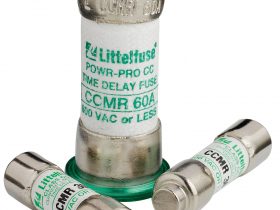Everyone understands the importance of good connections in business and in life generally. Good electrical connections are important too. The Canadian Electrical Code provides some important information and contains many rules on connecting electrical equipment. In this article we will cover a few of the many connection principles contained in the code.
Motors
Rule 28-104 for motor wiring specifies:
“Supply connections to a motor connection box shall have an insulation temperature rating equal or greater than Table 37, unless the motor is marked otherwise and their ampacity based on a 75C conductor insulation rating except for Class A motors only where their ampacity may be based on 90C insulation when 90C wire is used as circuit conductors to the motor.”
What the code wants us to do here (some types of motors are designed to run at higher temperatures than others) is to ensure that conductors are not affected by high motor temperatures. Supply conductors that run directly into a motor terminal box must have insulation temperature ratings compatible with the motor operating temperatures. But despite their higher insulation temperature ratings, we must select motor conductors based on their 75C ampacity ratings.
For example, from Table 37, a totally enclosed fan cooled (TEFC) Class F motor must be supplied with minimum 90C conductors. However the 90C columns in Tables 1 to 4 cannot be used to determine the conductor ampacities. For that motor we must choose the 75C columns of Tables 1 to 4 for the right size supply wiring.
But there is yet another condition. Notice that the Table 37 wiring insulation ratings are based on ambient temperatures of 30C. If the motor is to operate in a location where the ambient temperature is higher than 30C, the difference between the actual location temperature and 30C must be added to the wiring temperature selected from Table 37. If the motor used in the above example is to run in a location where the ambient temperature is likely to be 40C, we must select motor supply conductors having a minimum temperature rating of 100C (add 40C-30C).
Rule 28-104 also specifies:
“Where Table 37 requires insulation temperature ratings in excess of 75C, the motor supply conductors shall not be less than 1.2 m long and shall terminate in a location not less than 600 mm from any part of the motor except that for motors rated 100 hp or larger, their terminations shall be not less than 1.2 m from any part of the motor.”
What’s happening here? The code wants to ensure that higher motor temperatures will not adversely affect electrical equipment near a motor. For this reason, when Table 37 requires wiring temperatures above 75C, the electrical code specifies the above minimum distances between motors and electrical equipment such as motor disconnect switches or starters. Also, the minimum lengths of interconnecting wiring must be as specified for motors under 100 hp or larger.
Recessed Lighting Fixtures
Recessed lighting fixtures usually must operate at higher temperatures than those in free air since heat is not dissipated as rapidly. For this reason, Rule 30-408 specifies:
“Conductors having insulation suitable for the temperatures encountered shall be used for wiring recessed luminaires. Tap conductors must be installed in a raceway extending at least 450 mm but not more than 2 m from the luminaire, and terminate in an outlet box located not less than 300 mm from the luminaire.”
When recessed fixtures come complete with factory-installed high temperature wiring, Rule 30-408 specifies that the fixture wiring should be run in flexible conduit to an outlet box located not less than 300 mm from the fixture. The factory-installed leads must be between 450 mm and up to 2 m in length between the fixture and the outlet box. These precautions are required to ensure that the supply conductors are not adversely affected by higher lighting fixture temperatures.
Aluminum Conductors
Rule 12-118 specifies:
“Adequate precaution shall be given to the termination and splicing of aluminum conductors, including the removal of insulation and separators, the cleaning (wire brushing) of stranded conductors, and the compatibility and installation of fittings.”
This rule provides some specific terminating methods for aluminum wiring including:
- removing insulation and wire brushing stranded wiring
- applying a joint compound to stranded conductors to penetrate the oxide film and prevent oxide from reforming
- connection to electrical equipment that has terminals compatible with aluminum conductors
Terminating Armoured Cables
Electrical wiring exiting from armoured cables is easily damaged by contact with the sharp ends of the armour at connection points. Therefore Rule 12-610 specifies:
“Where conductors issue from armour, they shall be protected from abrasion by bushings of insulating material or equivalent devices.”
This rule is designed to ensure that armoured cable terminations are done in such a way so as to minimize the potential for damage. Rule 12-610 provides some specific advice including:
- insulating material to separate the wiring from the end of the armour
- for No. 8 AWG or larger wiring, electrical equipment must have a smooth hub or an insulated bushing is used
- connections to open wiring such as knob and tube wiring must be done in a box having a separately bushed hole for each conductor
As in past articles, you should consult the local inspection authority in each province or territory as applicable for the most current interpretation of any of the above.














Find Us on Socials